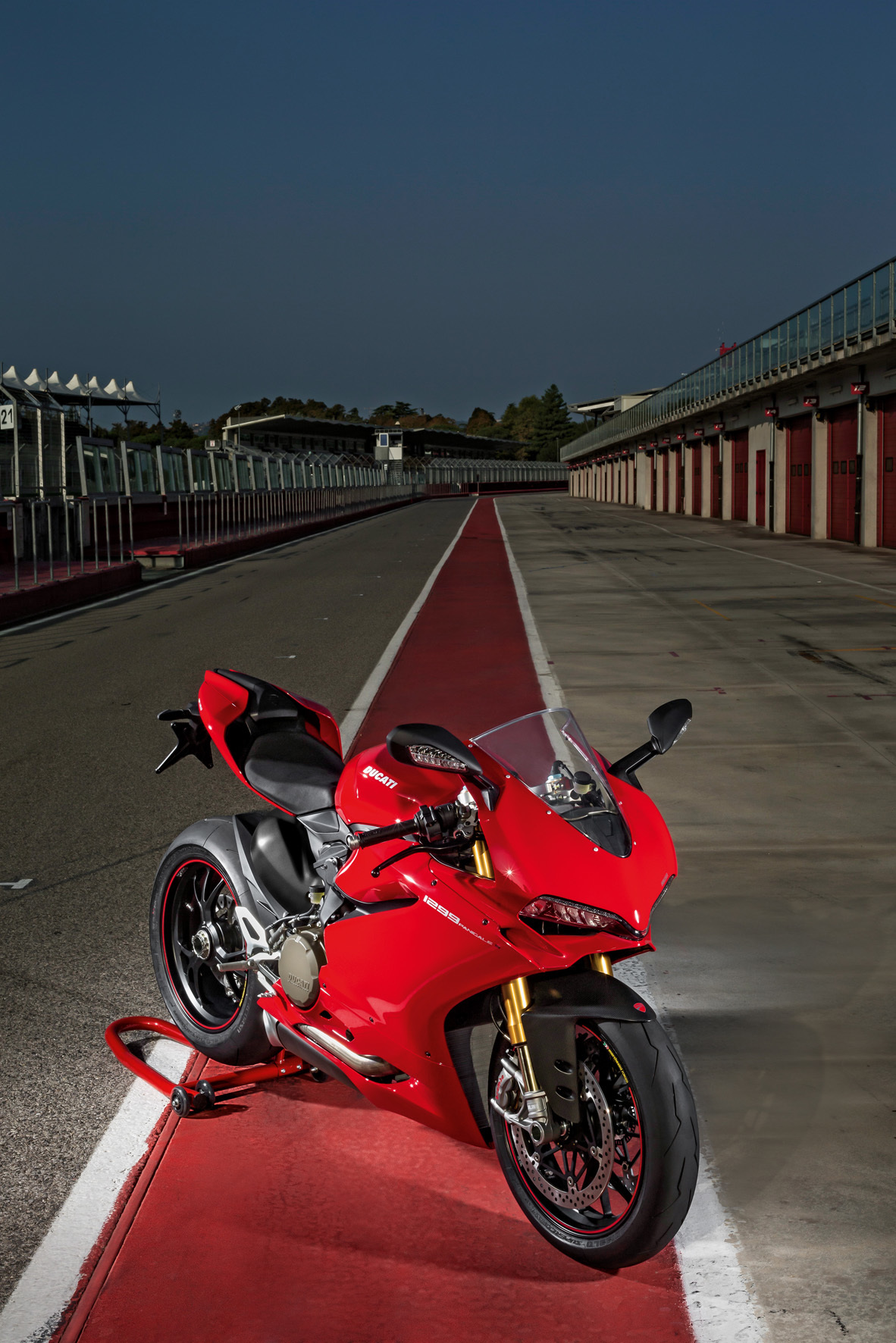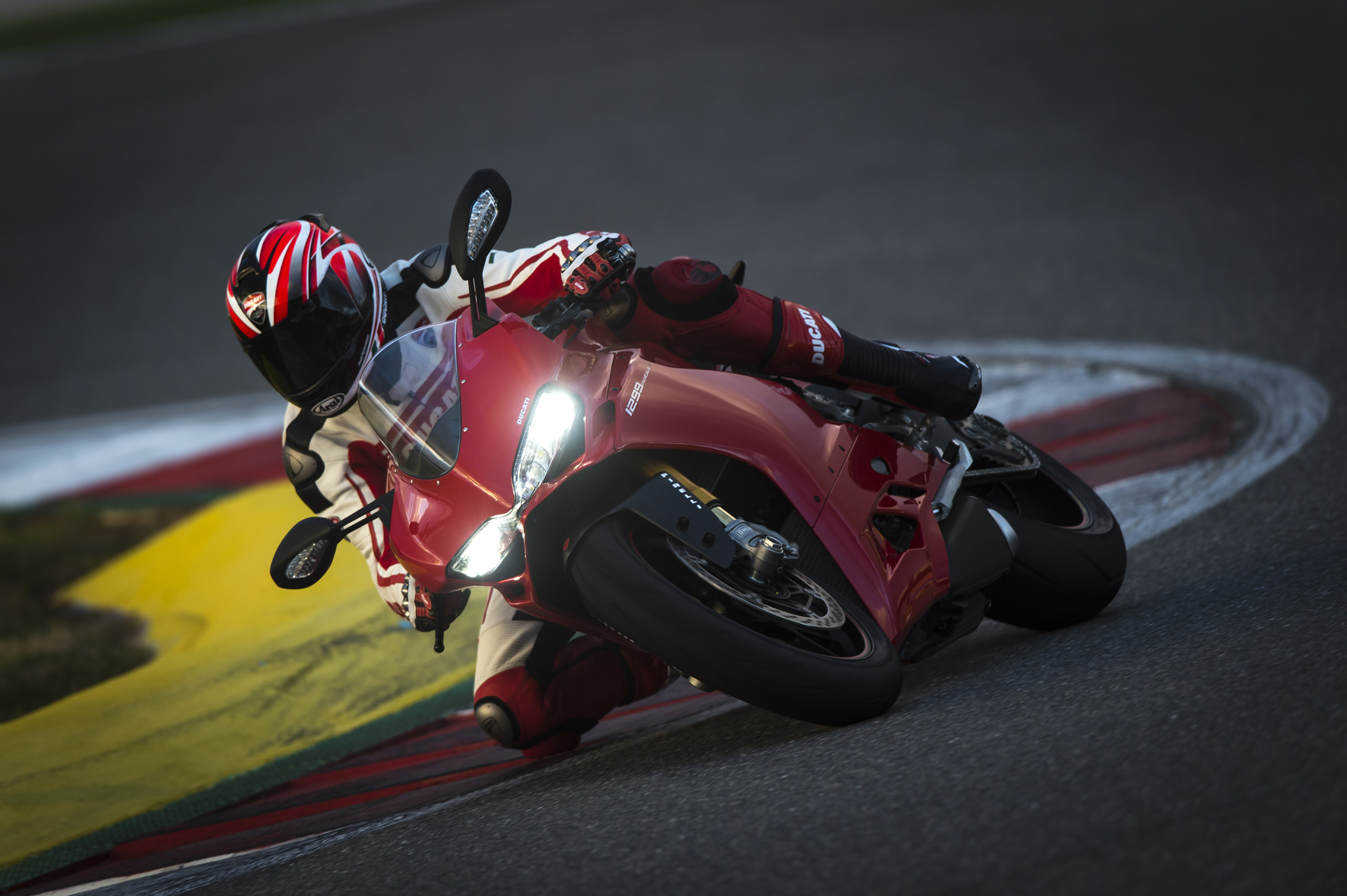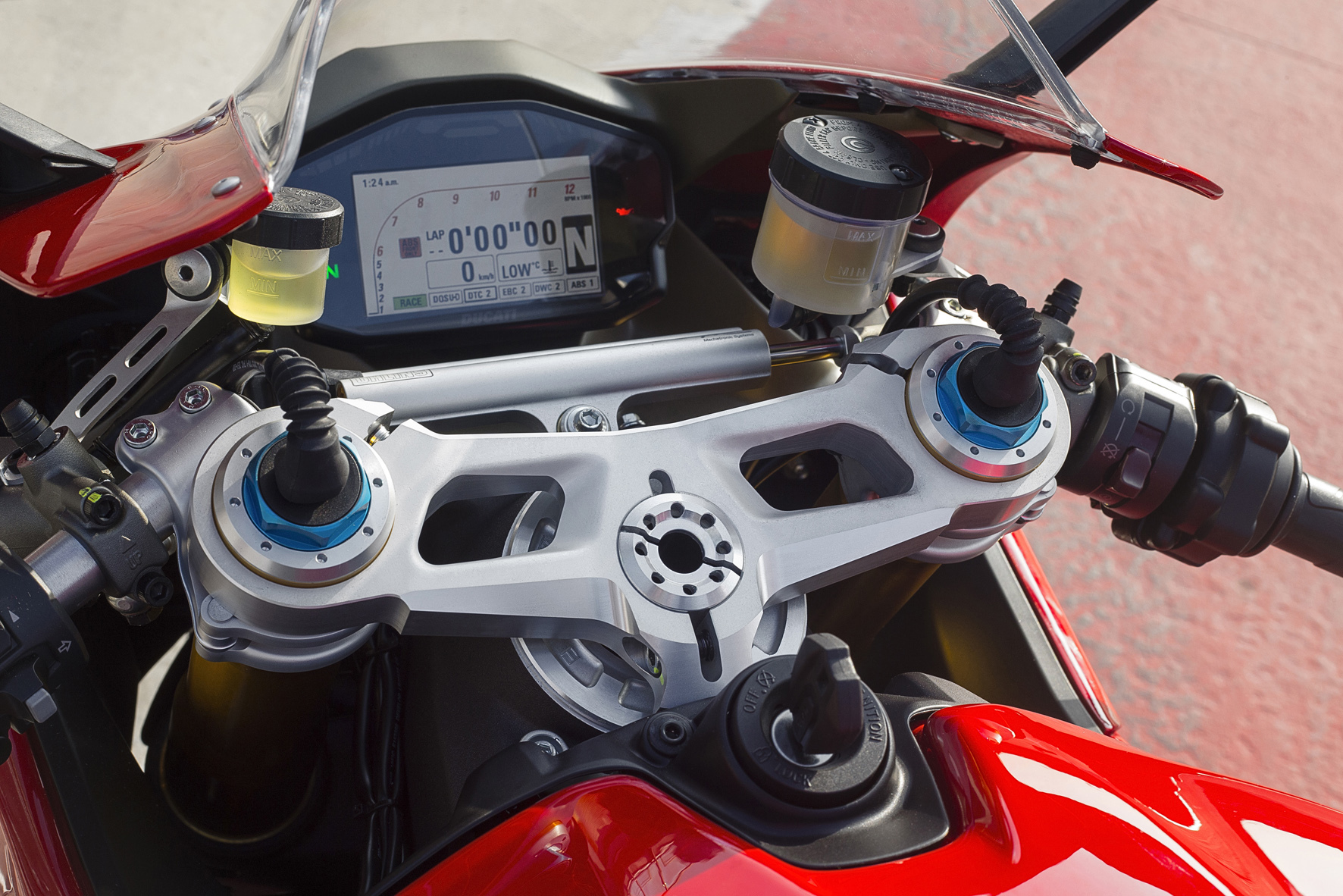Red, Italian superbikes have never been the easiest motorcycles to get on with. The Panigale 1199, which was introduced three years ago, was a perfect example.
The breathtakingly stunning, feather-light, powerful twin was explosive, but it wasn’t particularly strong in the lower revs, the throttle response wasn’t always smooth and it had a tendency to be nervous under acceleration. So what happens when you add another 87 cubes, 10 extra stallions and nine pounds-feet of torque?
They aren’t the only changes that Ducati has implemented to create the new Panigale 1299 and the higher specification, almost £4,000 pricier S.
The main differences between the two are just as before: the standard bike has mechanically fully adjustable suspension while the S gets electronically adjustable Öhlins components front and rear along with a steering damper, a carbon fibre mudguard and forged wheels.
But the biggest news is that the 1299 S is now the most powerful production twin-cylinder bike ever made, and according to Ducati, it’s also the most technologically advanced.
Alongside the 90-degree forward-leaning V-twin engine, now bored out to 1,285cc to boost the bottom and midrange grunt, the Italians have also loaded the Panigale with electronics.
It now boasts anti-wheelie, traction control, ABS that senses when you’re cornering and adjustable engine braking, all of which is easily regulated via two buttons on the handlebars, (an option for the standard bike) and a quick shifter that also allows you to make downshifts without using the clutch.
The S version has semi-active suspension too. It self-adjusts on the move, responding and adapting continually to the riding circumstances to optimise the bike’s performance. If that sounds far too modern, you can also set the suspension so that it’s passive, just like the good ol’ days.
Having 205bhp on tap is all well and good, providing it’s manageable. And it is, thanks to the rider aids, which are subtle, effective and accessed via an intuitive dashboard menu that is easy to operate even if the black art of tweeting still eludes you.
As with its predecessor, the Panigale 1299 S remains staggeringly fast and twitchy when the throttle is wide open, but it’s usable. With such a broad spread of power, the engine is more forgiving and less demanding, so you can hold onto gears for longer without having to tap dance through the gearbox to find some punch. It’s more at home on the road too, although it can still feel indecisive with small throttle openings at low revs.
On track, the 1299 S is nothing less than a demon. It shakes its head and roars at the top of its capacious lungs – even in fourth gear. And there are two more cogs left in the box.
The Panigale has undergone some other, more discrete changes, like the new fairing sections with bigger air scoops, elegant mirrors and wider frontal bodywork. The windscreen is higher and the machined footpegs are no longer as slippery as two bars of soap.
Living with an Italian sportsbike has now become a tad easier, although the moments of quiet calm, particularly on track, are few and far between. Not just because of how much movement there is in the chassis, but also because the 1299 S devours straights with such brutality that even Portimão feels like a go-kart track.
A shark in a paddling pool would have more room.
The current competition from Aprilia’s RSV4, BMW’s S 1000 RR and Kawasaki’s H2 is fierce. Ducati’s Panigale 1299 S will definitely overload your senses and it might well offer the most extreme riding experience, but despite all the electronics, the Panigale 1299 S isn’t an everyman or an everyday bike. So it’s not necessarily the quickest. It needs skill, dedication and space to get the best from it.
It’s not the cheapest, either. This mechanical work of art costs from £20,795, the standard version is ‘just’ £16,695. That’s a lot of money, especially when you know you’ll only be able to truly spank it in your dreams, or if you can sneak into Monza unnoticed one quiet evening.
It’s certainly not the most rational option, but if your heart is set on Panigale,
rationality doesn’t come into it.


